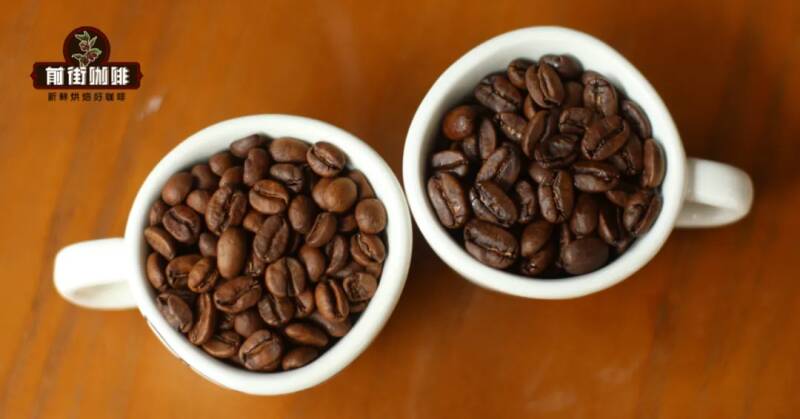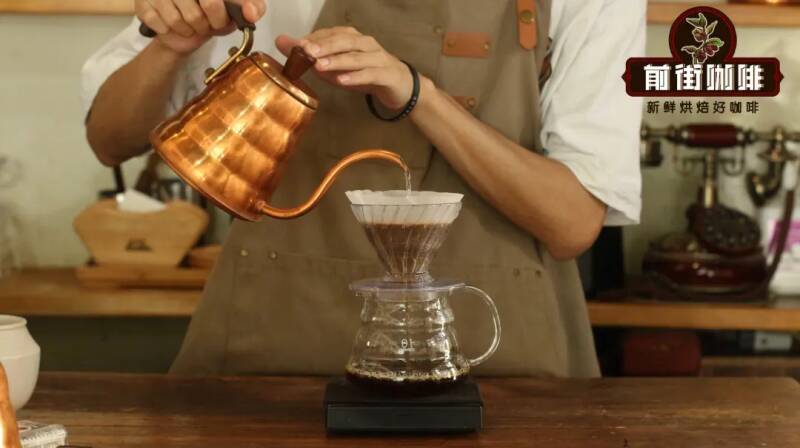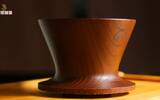How to decide on the brewing plan for hand-brewed coffee? How to determine the extraction parameters of unfamiliar coffee beans? What is the difference between deep-roasted and lightly roasted coffee beans?
If we want to make a good cup of coffee, then a suitable extraction scheme must be indispensable. But you know, there are so many types of coffee, how can we know that this scheme must be applicable to the current beans? This is a problem that most friends will have when they get new strange beans!

So Qianjie would like to share today: "how to make a plan for making unfamiliar coffee beans"!
How to make the cooking plan of unfamiliar coffee beans? Many friends may have imagined to change the degree of cooking methods, but in fact, we can be a little simpler, do not have to imagine the problem is so complicated. Because generally speaking, people will have a kind of inertia, when accustomed to a certain way of cooking, rashly to change, the outcome may be counterproductive. Therefore, we only need to adjust the extraction parameters in the extraction scheme.

The question goes back to the original point, there are so many kinds of beans, different kinds of beans, different densities, different baking degrees, how can we know which parameters are most suitable for their use? Qianjie will suggest that by looking at the information on the label of the beanbag to find out the appropriate cooking parameters for the bean. In hand-brewed coffee, the roasting degree of coffee beans is our most important reference information, because the extraction of hand-brewed coffee can be divided into two categories, deep roasting and light roasting. Shallow baking has higher extraction efficiency because it is difficult to extract, while deep baking has lower extraction efficiency because it is easy to extract. But! As everyone's definition of roasting degree is not the same, most merchants' coffee beans will not be labeled with roasted degree information. If this is the case, Qianjie Association recommends that the flavor information on the label bar be used as a reference standard. We can divide the flavor description of coffee into the following categories:
Flower-scented fruit rhyme: the flower-scented fruit rhyme here refers to the acidic fruit or floral flavor. Acidic fruits with citrus, berries, tropical fruits, etc.; flower aromas include white, purple, yellow and other flowers. Sugar sweetness: this category refers to the sweetness of honey, sucrose, brown sugar, caramel and other sweetness in the flavor description. Spice nuts: this category refers to the fact that the flavor description column contains more scorched and bitter flavors such as chocolate, nuts, spices and so on. Fermented aroma: this will be quite special, referring to the flavor description of wine, preserved fruit and other flavors that need to be fermented before they appear. If there are a large number of floral and fruit rhymes in the flavor description, or with high sweetness descriptions such as honey and sugar, then this kind of coffee beans tend to belong to the category of light and medium baking; if the flavor description is dominated by a slightly weaker flavor such as brown sugar and brown sugar, and then supplemented by black, nuts, or fruit, then the bean basically belongs to moderate baking. According to the description of the auxiliary flavor, we define it as medium-shallow or medium-deep; if the flavor description is based on chocolate, nuts, spices and other flavors, then the bean is basically deep baking.
When we know the baking information of the beans, we can begin to make their cooking plan. In the cooking scheme, the main things we need to decide are: powder-water ratio, grinding, and water temperature! Powder-water ratio: Qianjie will usually use 1:15 powder-water ratio, because whether it is deep roasting or light roasting, 1:15 powder-water ratio will make a cup of hand-brewed coffee with appropriate concentration. If you want the coffee to be strong, the powder-to-water ratio can be reduced to 1:14, and if you don't want to be too strong and want the flavor to stand out, you can use the 1:16 powder-to-water ratio.
Degree of grinding: for coffee extraction, the degree of grinding is a more important parameter, it determines the particle size of coffee powder, water can easily / more difficult to extract flavor substances from coffee powder. Therefore, qualified friends can directly apply the principle of No. 20 sieve calibration, that is, after grinding, the sieve pass rate of medium and shallow roasted coffee beans is 75-80%, and that of medium-deep roasted coffee beans is 70-75%. If you don't want to screen the net, you can click jump.
Water temperature: water is used as extraction solvent, and its temperature determines the extraction efficiency. The higher the water temperature, the higher the extraction efficiency, and vice versa. Light roasted coffee beans are difficult to extract because of their high density, so we need to use higher water temperature to extract them. Qianjie suggests using a water temperature range of 90 °C ~ 93 °C. the fresher the shallow baked beans, the thicker the grind, the higher the water temperature used. The recommended water temperature for deep baked beans is in the range of 87 °C ~ °C. similarly, the fresher and thicker the beans are, the higher the water temperature is in the range, and vice versa.
Beans such as specially treated beans are special. Although most of them are medium-and shallow-roasted coffee beans, they can be launched faster because anaerobic treatment makes their structure more loose. Therefore, although they follow the extraction scheme of shallow baking, the degree of grinding can be slightly finer, reduce the gap between powder and powder, and increase the time of hot water extraction, so as to obtain a complete extraction effect.
-END-
Important Notice :
前街咖啡 FrontStreet Coffee has moved to new addredd:
FrontStreet Coffee Address: 315,Donghua East Road,GuangZhou
Tel:020 38364473
- Prev

What is the difference between the safety filter cup and the V60? Will the wooden filter cup taste wood when washed out? How to make deep-roasted coffee beans?
Today, while Qianjie was sorting out a small corner of the store, he found a special but very niche filter cup. Although this passage sounds very niche, it is the case! The name of this filter cup is "Anqing Filter Cup" and it is produced by the well-known Yamanaka Lacquer Wood Factory in Kaga, Japan. So today, Qianjie will come to divide it
- Next

Fight!! The Colombia government announced the end of the ceasefire agreement!
On the 16th local time, the Minister of Defense of Colombia held a press conference. At the press conference, the Minister of Defense announced that the Colombia government had terminated the ceasefire agreement signed with some factions of the anti-government armed group "Central Staff." According to the Secretary of Defense at a press conference, the "Central Staff Headquarters"
Related
- Heavy! Nestlé has been exposed to consider selling blue bottle coffee!
- Compensation of 270 million yuan! Starbucks has been charged with violating labor laws more than 500,000 times!
- What are Xizhao coffee beans? Why did they become champion beans? How to rush to the manor on the dividing line in Colombia?
- What does channel effect mean in coffee? Why are there holes in the coffee powder cake?
- How much do you add to the milk for latte, Australian white and cappuccino? What is the ratio of coffee to milk between latte and frill?
- What is the cause of coffee astringency? Why does the brewed coffee feel astringent?
- The industry is heavy! Lucky will open its first store in Taiwan in December?!
- Unbelievable! Does one person at Starbucks wear a tiger head set and hold a mace to order?!
- Return to the way you came from?! Some cities in Mixue Ice City are selling breakfast!
- The shop assistant was angry after being refused to jump in line to buy coffee! Party concerned: Police have been reported

